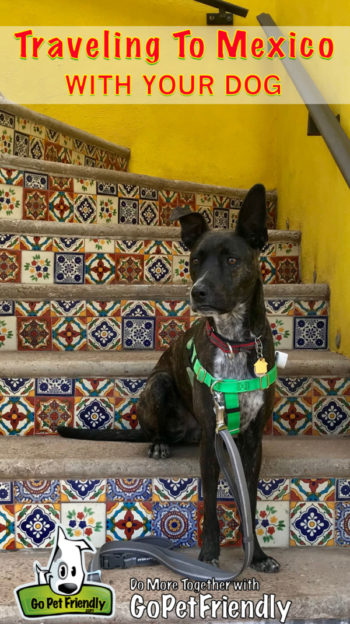Traveling to Mexico from the U.S. with your dog? The rules for crossing the border with pets changed in 2024. If you’re planning a trip with your pup, these tips will ensure you’re prepared!
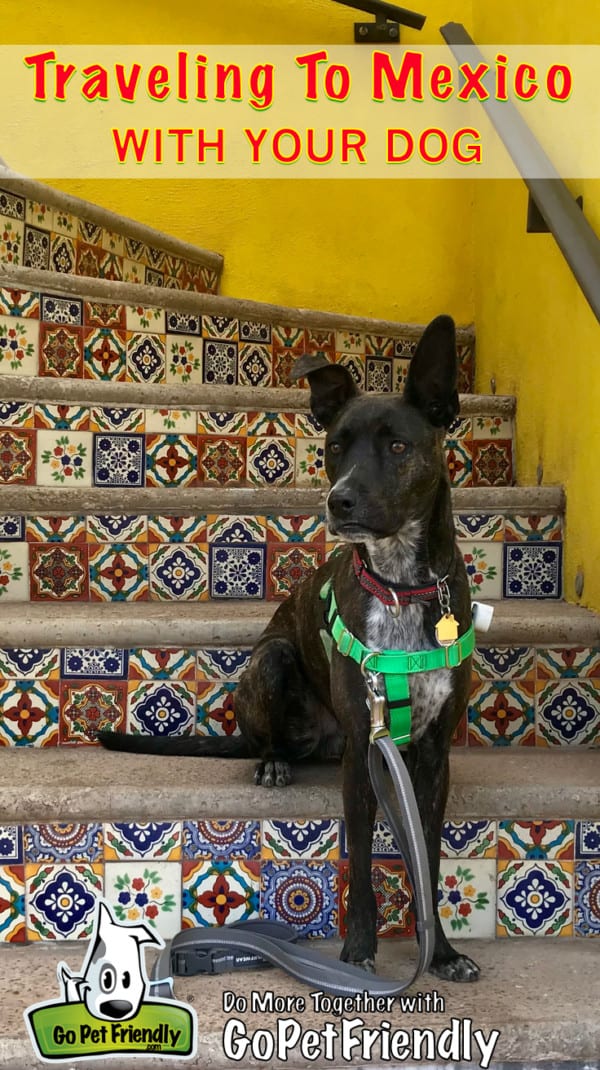

Whether you’re walking across the border for the day or planning a longer trip to Mexico, there’s no reason to leave your pup behind! In 2024, the U.S. set some new requirements for bringing a dog into the country. Fortunately, it’s now easier than ever to take your furry travel buddy along.


Traveling To Mexico With A Dog
Your experience crossing the border will be very different depending on how and where you’re traveling. If you’re flying, your documents will be thoroughly reviewed by the airline and the immigration agents.
Driving across the border might result in a through inspection or be very casual, depending on where you choose to cross. More scrutiny is common at busy crossing like San Diego and El Paso.
And if you’re walking across the border, the process is likely to be very casual – especially if you’re visiting a small town!
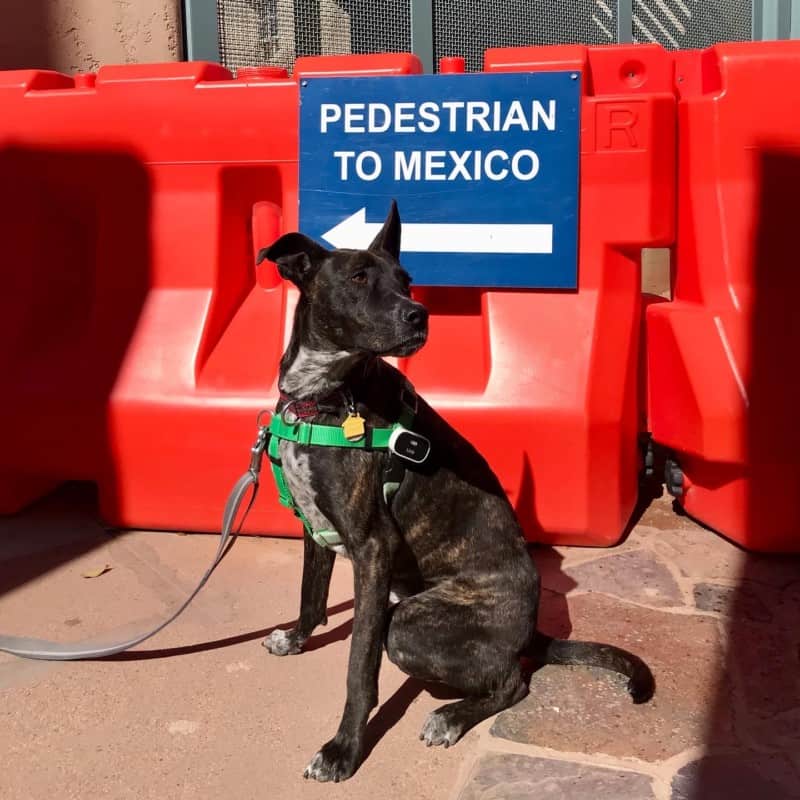

What People Need
Mexico requires all foreign citizens visiting the country to fill out an Official Entry Immigration Form, also called a tourist card, prior to their arrival. Tourist cards are free and you can fill out and print the form at home.
When you arrive at the border, present the immigration officer with your printed tourist card and your passport. Since your information will already be in their system, once your tourist card is stamped, you’ll be free to enjoy Mexico!
If you are walking across the border into Mexico, you might even find that the immigration officer doesn’t request your tourist card. Still, it’s better to have it with you – just in case.
Auto Insurance
If you are driving in Mexico, you will also need to purchase Mexican car insurance. Even if your U.S. auto insurance policy covers you in Mexico, it cannot pay damages that you would legally owe to others if you were in an accident. Mexican law is very clear—in order to drive in Mexico, you must at least have Mexican liability coverage, underwritten by a Mexican carrier.


What Dogs Need
Effective December 2019, a health certificate for dogs and cats is no longer needed to enter Mexico.
Instead, travelers arriving in Mexico with pet dogs and/or cats must visit the Mexican Animal and Plant Health Inspection Office (OISA), and see the person working with SENASICA. In practice, however, it seems this rule applies mostly to people arriving at a Mexican airport. Reports from people who’ve walked or driven into Mexico suggest that physical inspections of pets is rare.
If you travel regularly between the U.S. and Mexico with your dog, you can request to register in the “Pet Program – Frequent Traveler.” For further information, refer to the USDA website.


Our Experience Traveling To Mexico With Myles
SENASICA inspectors aren’t present at every crossing. When we walked into Mexico from Naco, Arizona near Bisbee, there was no pet inspection. Myles simply strolled across the border with us.
READ MORE ⇒ Travel Guide: Pet Friendly Bisbee, Arizona
If there is a SENASICA inspector at your crossing, the rules state that your pet must be presented in a clean cage or carrier. Though, we’ve also heard this rule is not always enforced – especially for larger pets. If you cannot easily carry your pet in a carrier, presenting your dog on leash should be fine.
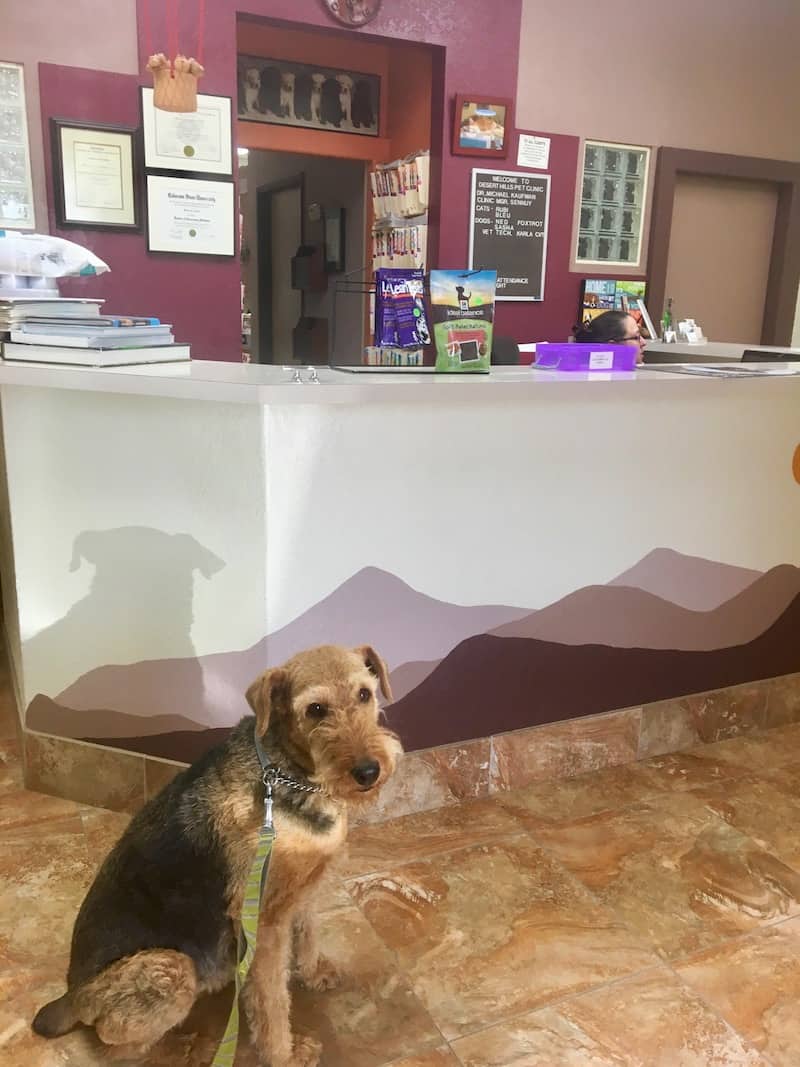

The SENASICA agent will perform a physical inspection of your pet to determine the following:
- Your pet shows no sign of infectious and contagious diseases,
- is free of ectoparasites (ticks), and
- has no fresh wounds or wounds in the process of healing.
Pets with ticks cannot cross the border. You’ll either need to return to the U.S., or the SENASICA agent will send a sample of the tick for diagnostic testing at the official laboratory. Your pet would have to remain at the OISA (Mexican official office) until confirmation is received that the parasites are not exotic/foreign to Mexico.
What If Your Pet Has Health Issues?
If your pet is being treated for a wound and/or infection due to a skin condition, present the SENASICA agent with the diagnosis and treatment instructions from your veterinarian. This information should be presented on letterhead, including the veterinarian’s professional registration number (or equivalent).
Can You Bring Pet Food Into Mexico?
When traveling to Mexico with a dog, the rules state you can only bring enough food to feed your pet that day. If you’re staying longer than a day, you’re to purchase pet food in Mexico. Or, consider shipping your dog’s food to your destination so it’s there when you arrive. Otherwise, you might be sharing your meals!


Something To Consider Before Traveling To Mexico With A Reactive Dog
In Mexico, we’ve found people to be very friendly toward Myles. Shopkeepers are generally less fussy about letting animals in stores, so traveling with a dog is pretty easy.
However, in Mexico and other Latin countries, you often see dogs running loose in the streets. Generally, these dogs keep their distance. But if you have a reactive dog, it could be a very stressful experience for you both.
READ MORE ⇒ Tips For Traveling With A Reactive Dog


Returning To The United States
Of course, it’s just as important to get back into the United States as it is to get into Mexico! So be sure you have the documents you need to return home.
What People Need To Return To The U.S.
When you fly to the United States from Mexico, U.S. citizens need to show a valid passport. If you are traveling on foot or by car, you can provide your passport or a U.S. Passport card. A passport card is a less expensive alternative to a full passport. But it only works for land and sea travel from Mexico, Canada, Bermuda, and the Caribbean.
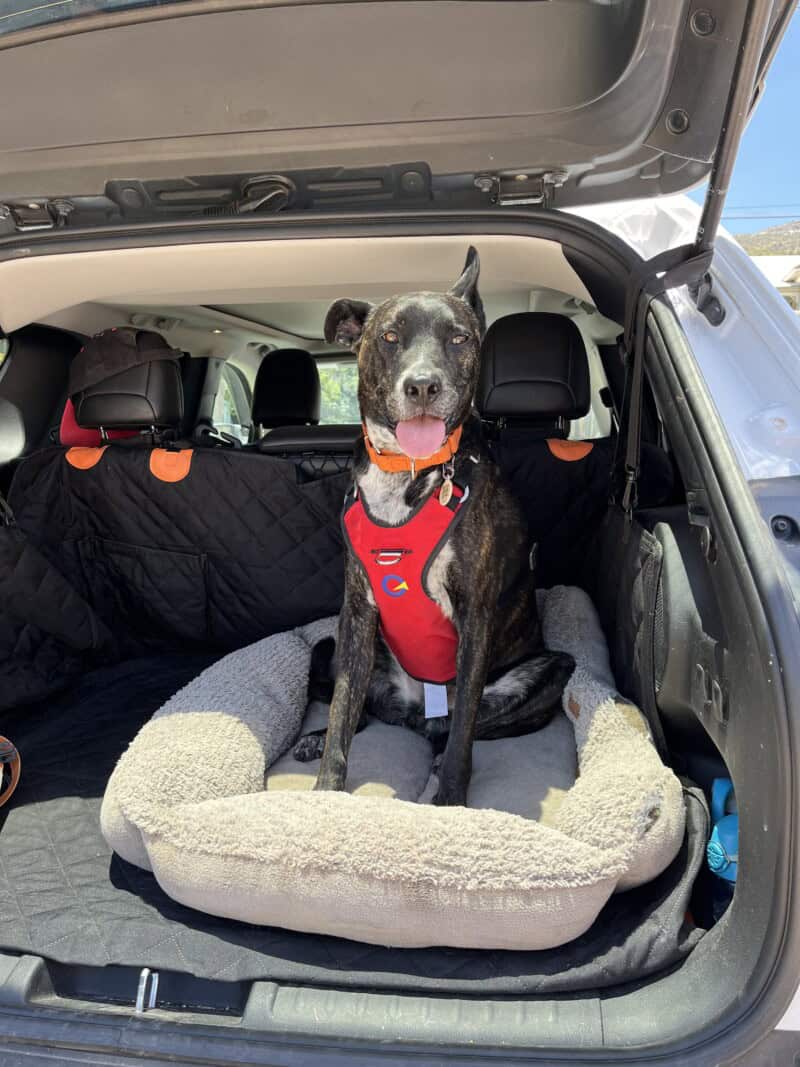

What Pets Need To Return To The U.S. From Mexico
All cats must appear healthy, but don’t need proof of rabies vaccination or certificate of health to enter the United States. If a cat appears ill, an examination by a licensed veterinarian at the owner’s expense might be required at the port of entry.
Things are a bit more complicated for our canine travel companions.
All dogs must:
- be at least 6 months of age at time of entry or return to the U.S.
- appear healthy
- have an implanted microchip that is detectible with a universal scanner to identify them
As long as your dog has not been in a country that is considered “high risk” for rabies in the last six month, the only document needed to enter the U.S. is a CDC Dog Import Form receipt.
You can check the list of high-risk countries HERE. (Spoiler alert: Neither Mexico nor the United States is considered a high-risk country.)
CDC Dog Import Form
Each dog needs their own receipt, which is sent to the owner’s email address after the form is completed online. You can print the receipt or show it to the border agent on your phone when you cross the border.
Submitting the form is free, and you can complete it on the day of travel. The receipt is valid for 6 months, as long as the country of departure stays the same and the dog hasn’t traveled to a high-risk country during the 6-month period.
The information collected on the form is straight-forward, including the owner’s drivers license or passport number, the location where the dog will be staying in the United States, the dog’s breed, age, and markings, and the date and from where the dog will be entering the country.
Note that, while the CDC recommends all dogs be vaccinated for rabies, you are not required to show your dog’s vaccination records at the border.
And there is no limit to the number of dogs you can bring, as long as they are your personal pets.
Have you taken your dog to Mexico? Tell us about your experience in the comments below!
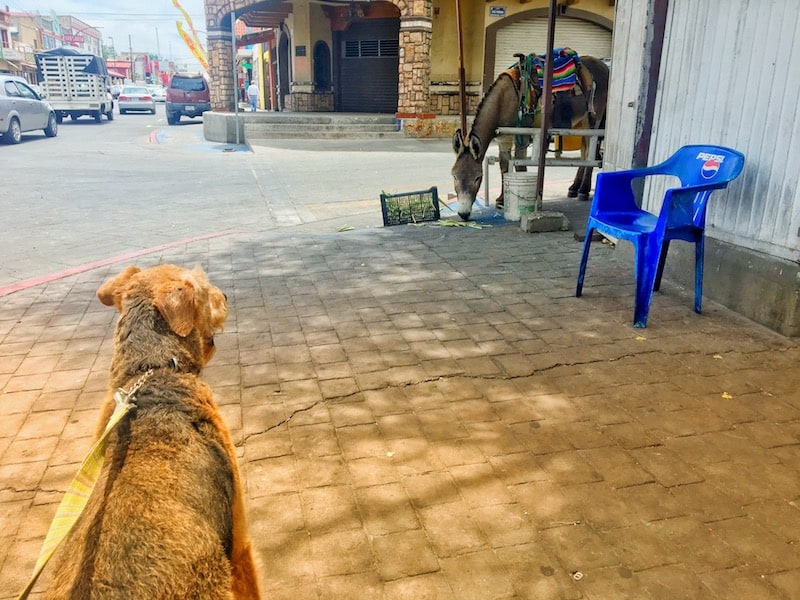

Amazon Affiliate Disclosure: GoPetFriendly.com LLC is a participant in the Amazon Services LLC Associates Program, an affiliate advertising program designed to provide
a means for website owners to earn advertising fees by advertising and linking to amazon.com, audible.com, and any other website that may be affiliated with Amazon
Service LLC Associates Program. As an Amazon Associate, the owner of this site earns a commission from qualifying purchases.
(Visited 83,036 times, 6 visits today)

